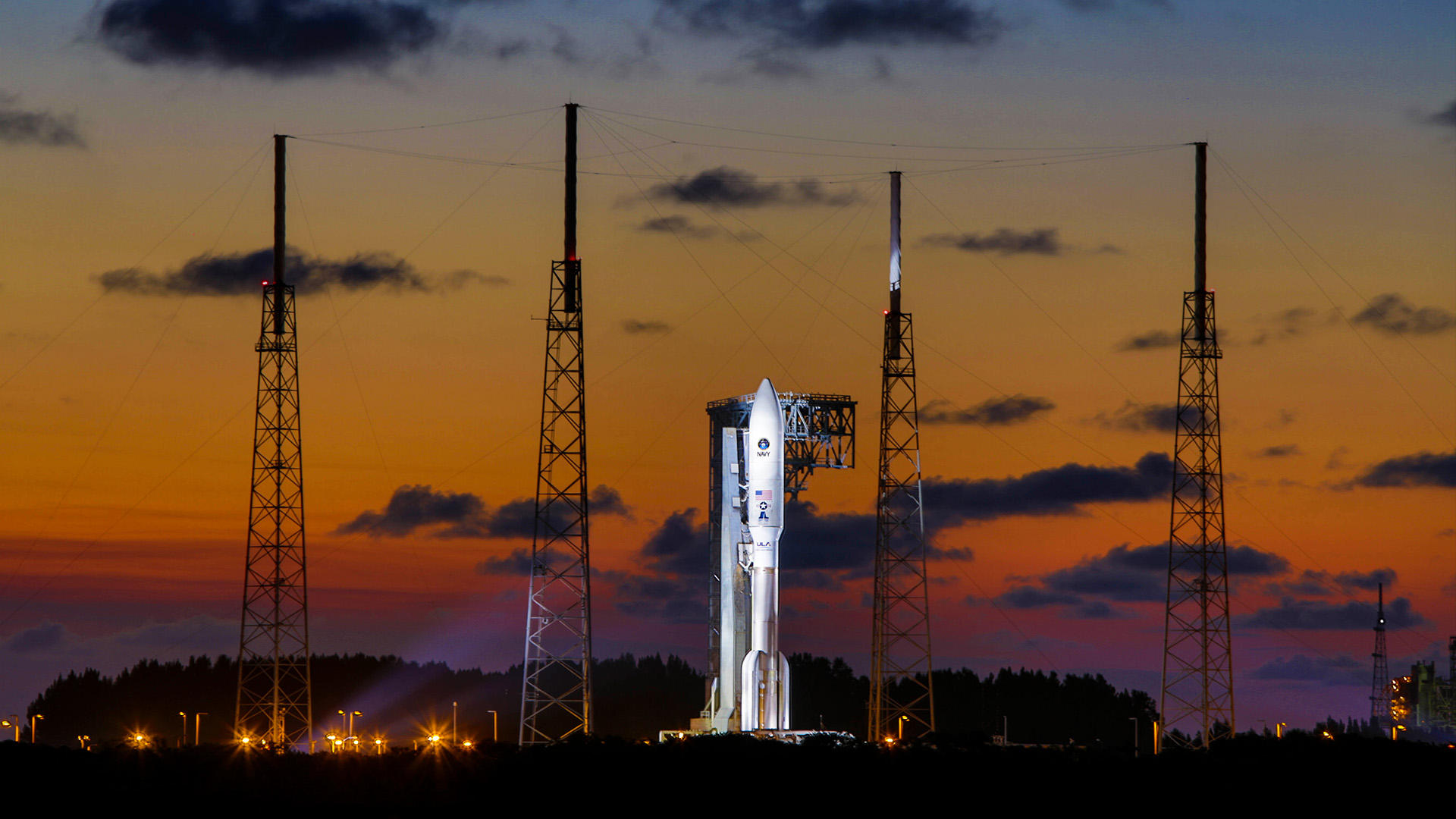News Archive
United Launch Alliance Successfully Launches X-37B Orbital Test Vehicle for the U.S. Air Force
Atlas V AFSPC-5 Mission Brochure
Atlas V AFSPC-5 Photos and Videos
Cape Canaveral Air Force Station, Fla., (May 20, 2015) – A United Launch Alliance (ULA) Atlas V rocket successfully launched the Air Force Space Command 5 (AFSPC-5) satellite for the U.S. Air Force at 11:05 a.m. EDT today from Space Launch Complex-41. The rocket carried the X-37B Orbital Test Vehicle or OTV, a reliable, reusable, unmanned space test platform for the U.S. Air Force.
“ULA is honored to launch this unique spacecraft for the U.S Air Force. Congratulations to the Air Force and all of our mission partners on today’s successful launch! The seamless integration between the Air Force, Boeing, and the entire mission team culminated in today’s successful launch of the AFSPC-5 mission” said Jim Sponnick, ULA vice president, Atlas and Delta Programs.
This Atlas V mission also includes the Aft Bulkhead Carrier (ABC) carrying the National Reconnaissance Office’s (NRO’s) Ultra Lightweight Technology and Research Auxiliary Satellite (ULTRASat). ULTRASat is composed of 10 CubeSats managed by the NRO and NASA. "The ABC contained 8 P-Pods that released 10 CubeSats that were successfully delivered. The CubeSats were developed by the U.S Naval Academy, the Aerospace Corporation, Air Force Research Laboratory, The Planetary Society and California Polytechnic, San Luis Obispo to conduct various on orbit experiments” said Sponnick.
This mission was launched aboard an Atlas V 501 configuration Evolved Expendable Launch Vehicle (EELV) , which includes a 5.4-meter-diameter payload fairing. The Atlas booster for this mission was powered by the RD AMROSS RD-180 engine, and the Centaur upper stage was powered by the Aerojet Rocketdyne RL10C-1 engine. This was ULA’s sixth launch of the 501 configuration, and ULA’s 54th mission to launch on an Atlas V rocket.
ULA's next launch is the Atlas V GPS IIF-10 mission for the U. S. Air Force, scheduled for July 15 from Space Launch Complex-41 from Cape Canaveral Air Force Station, Florida.
The EELV program was established by the United States Air Force to provide assured access to space for Department of Defense and other government payloads. The commercially developed EELV program supports the full range of government mission requirements, while delivering on schedule and providing significant cost savings over the heritage launch systems.
With more than a century of combined heritage, United Launch Alliance is the nation’s most experienced and reliable launch service provider. ULA has successfully delivered more than 90 satellites to orbit that provide critical capabilities for troops in the field, aid meteorologists in tracking severe weather, enable personal device-based GPS navigation and unlock the mysteries of our solar system.
For more information on ULA, visit the ULA website at www.ulalaunch.com, or call the ULA Launch Hotline at 1-877-ULA-4321 (852-4321). Join the conversation at www.facebook.com/ulalaunch, twitter.com/ulalaunchand instagram.com/ulalaunch.
United Launch Alliance Successfully Launches X-37B Orbital Test Vehicle for the U.S. Air Force
Atlas V AFSPC-5 Mission Brochure
Atlas V AFSPC-5 Photos and Videos
Cape Canaveral Air Force Station, Fla., (May 20, 2015) – A United Launch Alliance (ULA) Atlas V rocket successfully launched the Air Force Space Command 5 (AFSPC-5) satellite for the U.S. Air Force at 11:05 a.m. EDT today from Space Launch Complex-41. The rocket carried the X-37B Orbital Test Vehicle or OTV, a reliable, reusable, unmanned space test platform for the U.S. Air Force.
“ULA is honored to launch this unique spacecraft for the U.S Air Force. Congratulations to the Air Force and all of our mission partners on today’s successful launch! The seamless integration between the Air Force, Boeing, and the entire mission team culminated in today’s successful launch of the AFSPC-5 mission” said Jim Sponnick, ULA vice president, Atlas and Delta Programs.
This Atlas V mission also includes the Aft Bulkhead Carrier (ABC) carrying the National Reconnaissance Office’s (NRO’s) Ultra Lightweight Technology and Research Auxiliary Satellite (ULTRASat). ULTRASat is composed of 10 CubeSats managed by the NRO and NASA. "The ABC contained 8 P-Pods that released 10 CubeSats that were successfully delivered. The CubeSats were developed by the U.S Naval Academy, the Aerospace Corporation, Air Force Research Laboratory, The Planetary Society and California Polytechnic, San Luis Obispo to conduct various on orbit experiments” said Sponnick.
This mission was launched aboard an Atlas V 501 configuration Evolved Expendable Launch Vehicle (EELV) , which includes a 5.4-meter-diameter payload fairing. The Atlas booster for this mission was powered by the RD AMROSS RD-180 engine, and the Centaur upper stage was powered by the Aerojet Rocketdyne RL10C-1 engine. This was ULA’s sixth launch of the 501 configuration, and ULA’s 54th mission to launch on an Atlas V rocket.
ULA's next launch is the Atlas V GPS IIF-10 mission for the U. S. Air Force, scheduled for July 15 from Space Launch Complex-41 from Cape Canaveral Air Force Station, Florida.
The EELV program was established by the United States Air Force to provide assured access to space for Department of Defense and other government payloads. The commercially developed EELV program supports the full range of government mission requirements, while delivering on schedule and providing significant cost savings over the heritage launch systems.
With more than a century of combined heritage, United Launch Alliance is the nation’s most experienced and reliable launch service provider. ULA has successfully delivered more than 90 satellites to orbit that provide critical capabilities for troops in the field, aid meteorologists in tracking severe weather, enable personal device-based GPS navigation and unlock the mysteries of our solar system.
For more information on ULA, visit the ULA website at www.ulalaunch.com, or call the ULA Launch Hotline at 1-877-ULA-4321 (852-4321). Join the conversation at www.facebook.com/ulalaunch, twitter.com/ulalaunchand instagram.com/ulalaunch.


